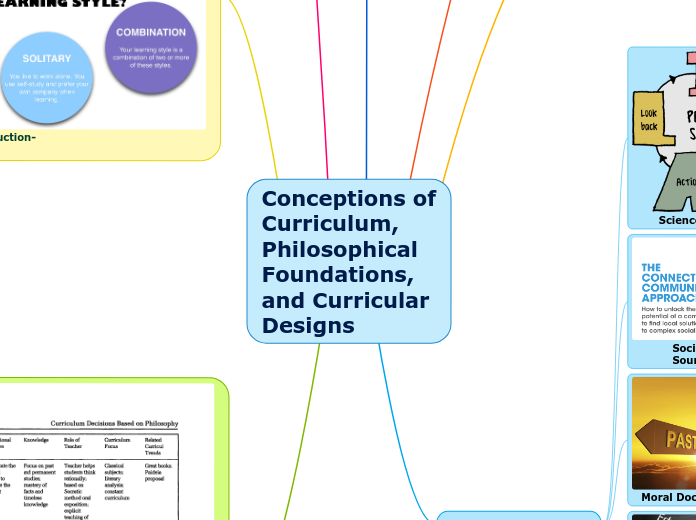Conceptions of Curriculum,
Philosophical Foundations,
and Curricular
Designsundefined
Curriculum as Technology
Self Actualization
Academic Rationalism
Curricular Designs
Science as a Source
Society as a Source
Moral Doctrine as a Source
Knowledge as a Source
Learner as a Source
Designing a curriculum requires a vision of education's meaning and purpose.
Curriculum designers are influenced by current research on brain development
Development of Cognitive Processes
Social Reconstruction-Relevance
Philosophical Foundations
Horizontal Organization
Blends curriculum elements to create a contemporary studies source
Vertical Organization
Sequences of curriculum elements
Simple to Complex Learning
Content is optimally organized in a sequence proceeding from simple subordinate components to complex components, easy to difficult content
Pre-requisite Learning
Similar to whole part learning, works on assumption that bits of information must be grasped before other bits can be comprehended
Whole to Part Learning
Curriculum should be arranged so that the content or experience is first presented in an overview that provides students with a general idea of the information or situation
Chronological Learning
Content whose sequence reflects the times of real world occurrences
Continuity
Vertical repetition of curriculum components
Integration
Linking all types of knowledge and experiences containing within the curriculum plan
Articulation
The vertical and horizontal interrelatedness of various aspects of the curriculum that is to the ways In which curriculum components occurring later in a programs sequence relate to those occurring earlier
Balance
Educators strive to give appropriate weight to each aspect of the design
